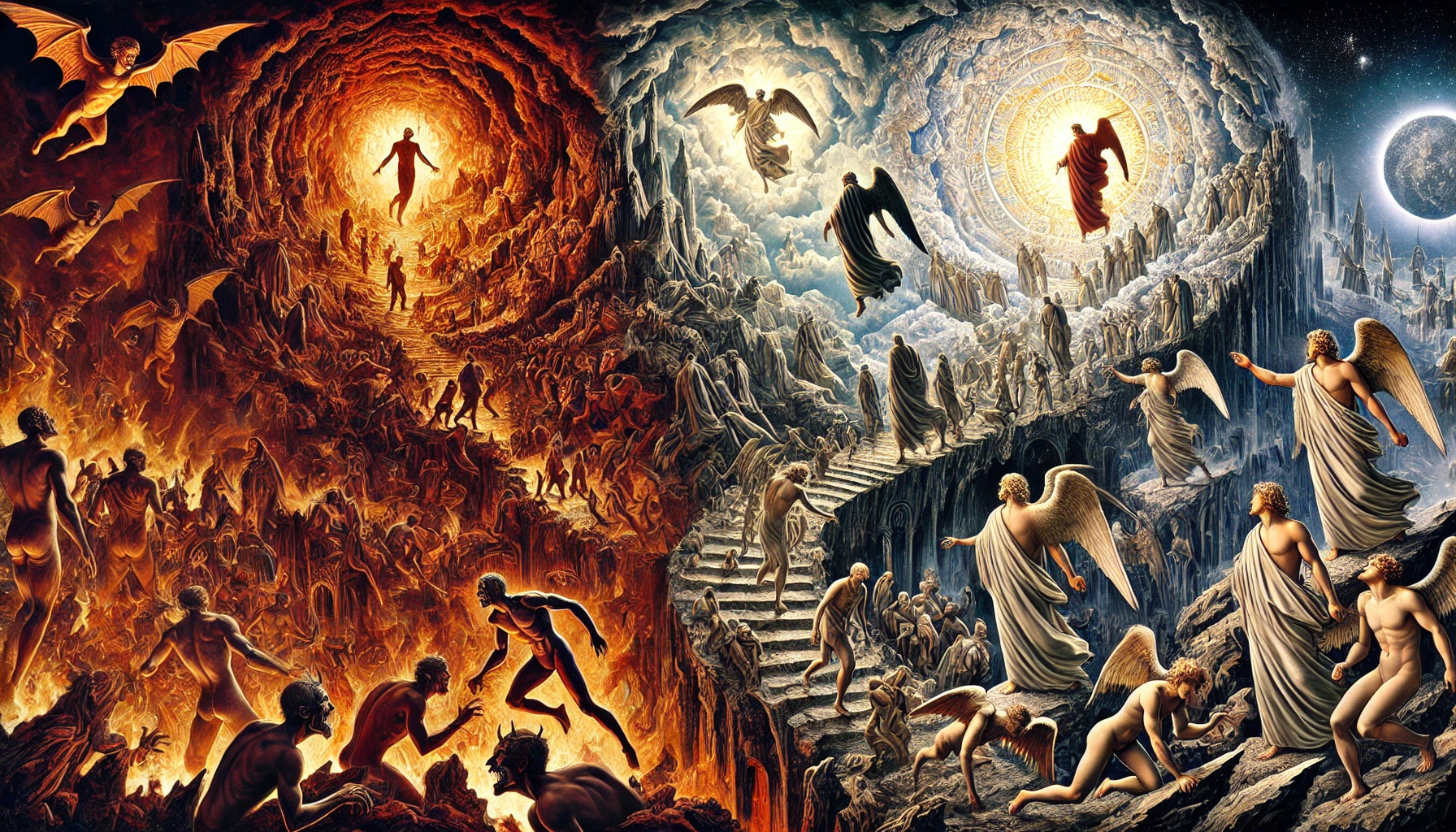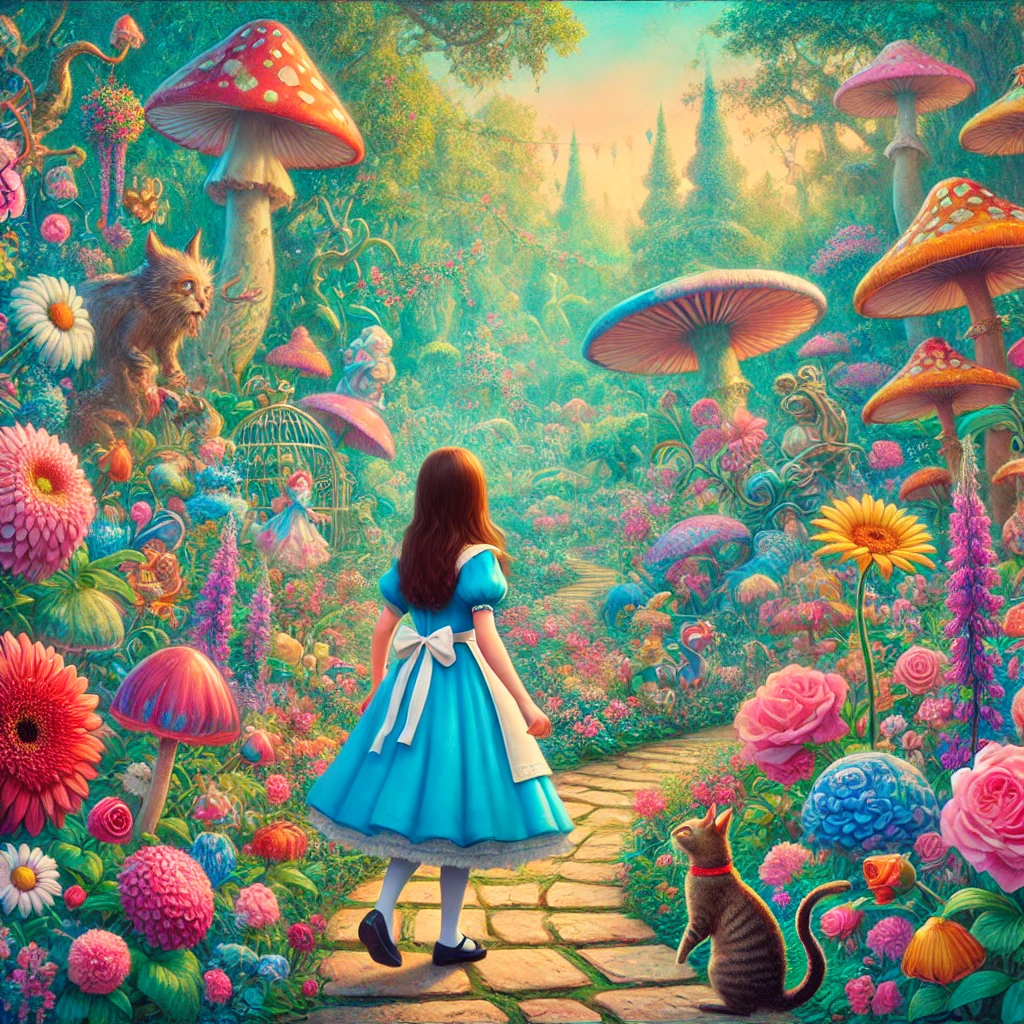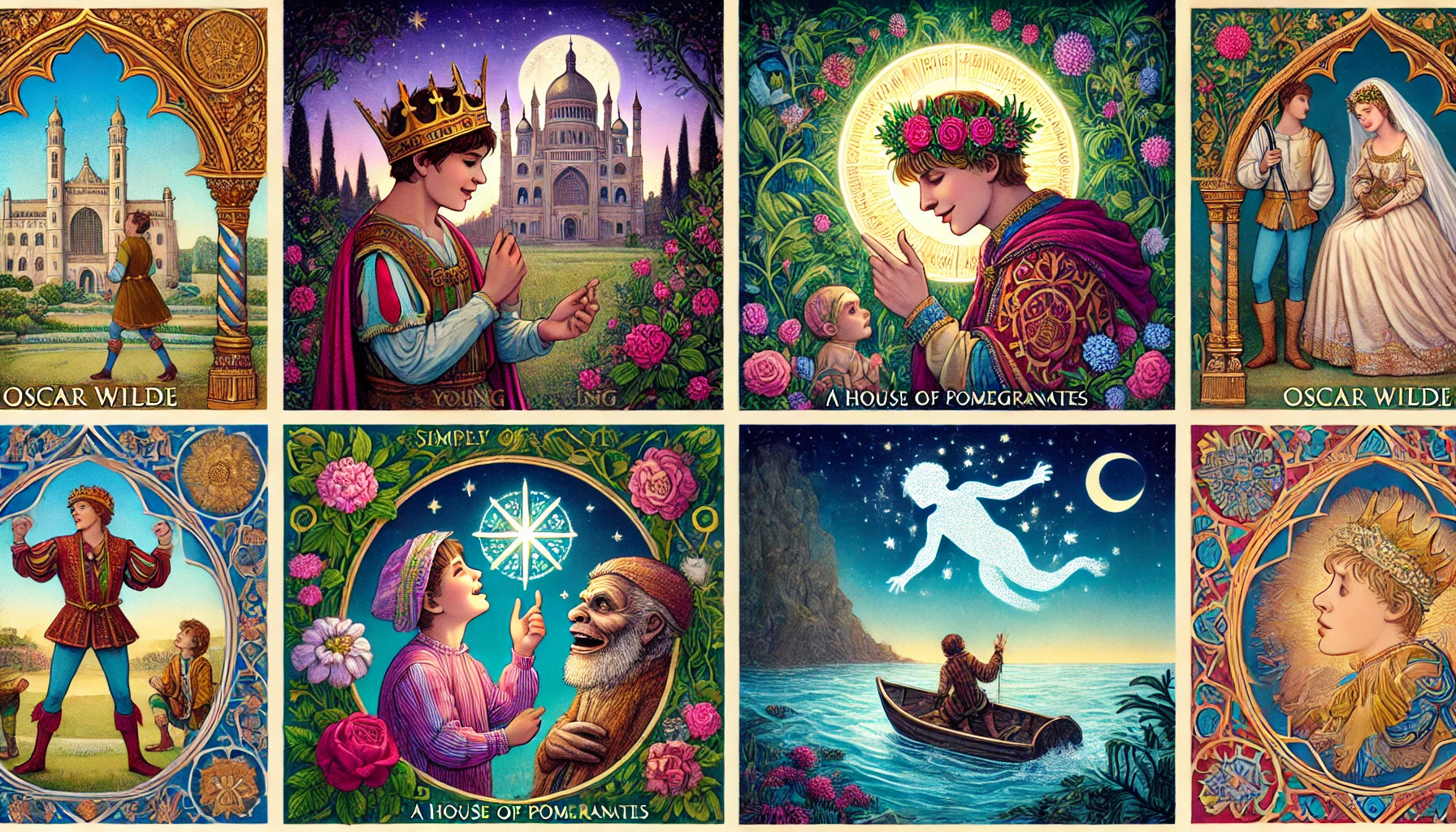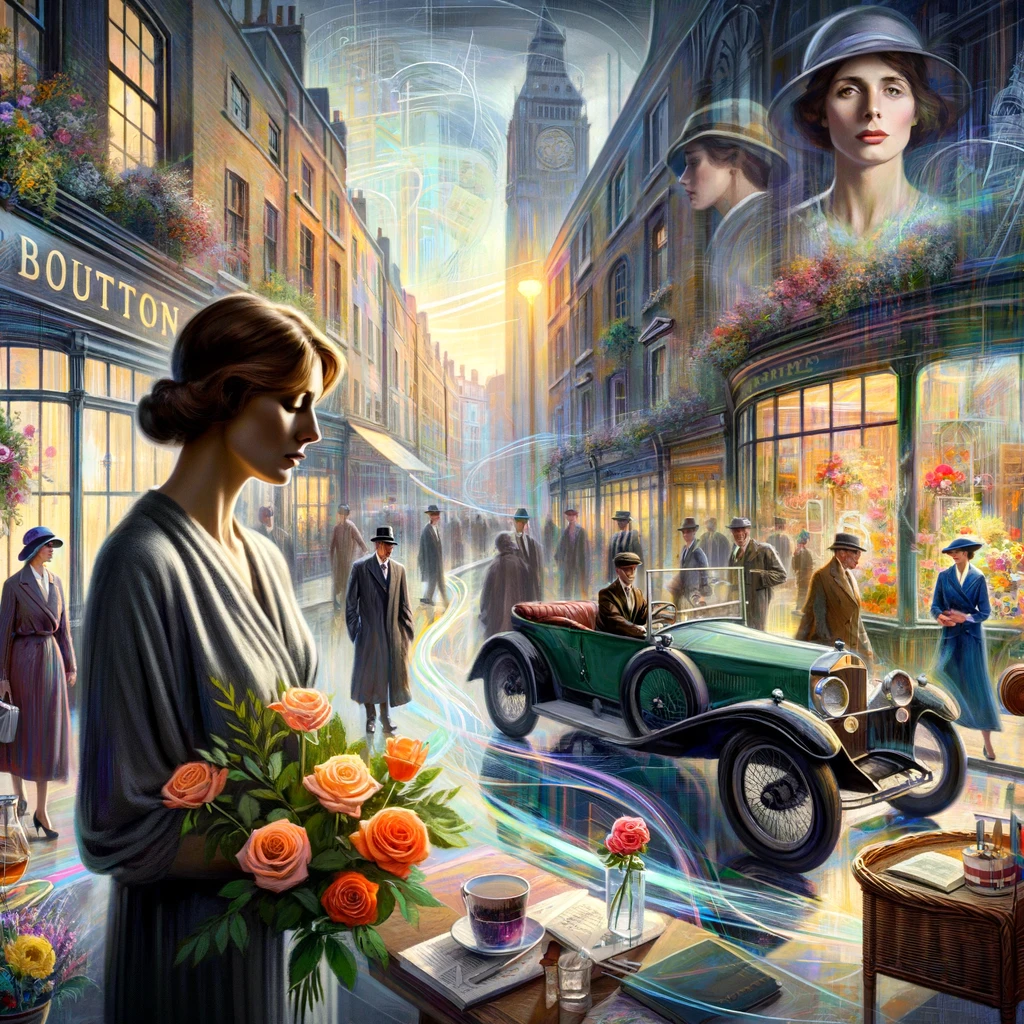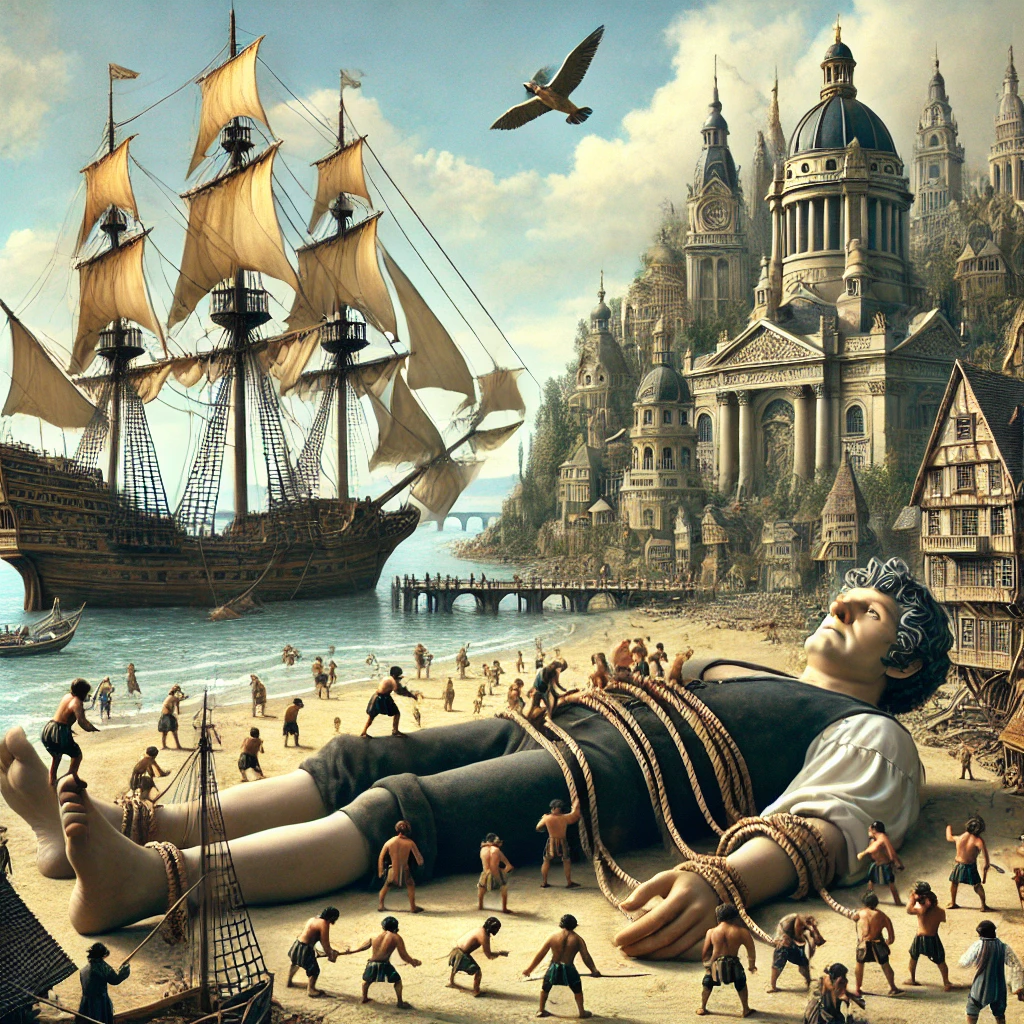The Divine Comedy, written by Dante Alighieri between 1308 and 1320, is one of the greatest masterpieces of world literature. This epic poem is divided into three parts: Inferno (Hell), Purgatorio (Purgatory), and Paradiso (Paradise). Each part represents a stage of Dante’s spiritual journey from sin and despair to redemption and divine enlightenment. The poem is written in the first person, with Dante himself as the protagonist, guided by the Roman poet Virgil and later by Beatrice, his idealized love. Dante explores themes of sin, justice, divine love, and salvation in a work that blends theology, philosophy, and poetry into an unforgettable vision of the afterlife.
Plot Summary
Inferno
Dante begins his journey lost in a dark, terrifying forest, symbolizing the confusion and moral corruption in his life. As he tries to escape, three beasts—a leopard, a lion, and a she-wolf—block his path, representing the sins of lust, pride, and avarice. Just when despair takes hold, the Roman poet Virgil appears, sent by divine forces to guide Dante through Hell, and later, Purgatory. Together, they enter the gates of Hell, inscribed with the haunting warning, “Abandon all hope, ye who enter here.”
They first arrive at the Vestibule of Hell, where the souls of the indifferent are condemned. These are the souls of people who lived without committing to either good or evil and are stung eternally by insects while chasing an elusive banner. Beyond this, they cross the river Acheron, ferried by Charon, into the First Circle of Hell, Limbo. Here reside virtuous non-Christians and unbaptized souls. Though they suffer no physical torment, these souls, including classical philosophers and poets, live in eternal longing, forever separated from God’s grace.
Deeper into Hell, Dante and Virgil enter the Second Circle, where the lustful are swept about by a violent storm, their punishment mirroring their inability to control their passions in life. Dante speaks with Francesca da Rimini, who tells of her tragic affair. As Dante descends through the Third, Fourth, and Fifth Circles, he witnesses the gluttonous, the avaricious, and the wrathful suffering for their earthly excesses. The gluttonous are battered by freezing rain, the greedy push massive weights in a futile battle, and the wrathful fight each other endlessly in the swamp of the river Styx.
They arrive at the gates of the city of Dis, which marks the division between Upper Hell and Lower Hell. Here, fallen angels and Furies block their passage, but a divine messenger arrives to open the gates. Inside, they enter the Sixth Circle, where heretics lie trapped in fiery tombs, eternally tormented for denying God’s teachings.
The journey continues into the Seventh Circle, where those who committed acts of violence are punished. This circle is divided into three rings: the first houses murderers and tyrants, submerged in a river of boiling blood; the second holds suicides, who are transformed into gnarled trees and torn by harpies; the third punishes blasphemers, who suffer under a rain of fire. Dante and Virgil then descend into the Eighth Circle, known as Malebolge, where fraud is punished. The ditches here are filled with hypocrites, thieves, and corrupt politicians suffering various gruesome punishments.
Finally, they reach the Ninth Circle, where traitors are frozen in a lake of ice, reflecting the coldness of their betrayal. At the center of Hell, Dante finds Lucifer himself, trapped in ice and eternally chewing on the three greatest traitors: Judas Iscariot, who betrayed Christ, and Brutus and Cassius, who betrayed Julius Caesar. Virgil and Dante climb down Lucifer’s body, passing through the center of the Earth, and emerge on the other side, ready to begin their ascent toward redemption.
Purgatorio
Emerging from Hell, Dante and Virgil find themselves at the base of Mount Purgatory, a towering mountain on an island in the Southern Hemisphere. Unlike Hell, Purgatory is a place of hope and purification, where souls seek redemption through repentance and spiritual cleansing. The mountain is divided into different terraces, each dedicated to purging a particular sin. These souls suffer, but unlike the damned in Hell, their suffering is temporary, and they endure it with the hope of eventually reaching Heaven.
Before they begin their ascent, Dante and Virgil encounter souls in the Ante-Purgatory, those who delayed their repentance or died by violence without receiving last rites. These souls must wait before they can begin their purification. Among them, Dante meets several figures who share insights into their lives and the nature of their suffering.
As they begin their climb up the mountain, the terraces of Purgatory represent the seven deadly sins, each being purged in stages. In the First Terrace, the proud carry heavy stones on their backs to humble them, while in the Second Terrace, the envious have their eyes sewn shut as they learn to appreciate the good fortune of others. In the Third Terrace, the wrathful wander in thick smoke that clouds their vision, mirroring the blinding effects of anger in life.
In the Fourth Terrace, the slothful are forced to run continuously, making up for the time they wasted on Earth. The Fifth Terrace houses the avaricious and prodigal, who lie face down on the ground, symbolizing their attachment to earthly wealth. The gluttonous in the Sixth Terrace suffer from constant hunger and thirst, unable to satisfy their appetites. Finally, the lustful are purified in the Seventh Terrace, walking through walls of fire to burn away their desires.
As Dante ascends, he encounters the soul of the poet Statius, who joins them for the remainder of the journey. Statius, having completed his purification, is now ready to enter Heaven. They eventually reach the Earthly Paradise, or Garden of Eden, at the mountain’s summit. Here, Dante is greeted by Beatrice, who will be his guide through Heaven. Before they can proceed, Dante must drink from the rivers Lethe and Eunoe to cleanse his memory of sin and strengthen his virtues. His soul now purified, Dante is ready for the final stage of his journey.
Paradiso
Beatrice leads Dante upward through the nine celestial spheres of Heaven, each corresponding to different virtues and the souls who embodied them in life. As they ascend, the light and joy of Heaven grow more intense, and Dante’s understanding of divine love and wisdom deepens. The journey through Paradise is marked by a growing sense of spiritual enlightenment, as Dante is exposed to the harmonious workings of the universe and God’s infinite love.
The First Sphere, the Moon, is home to souls who were unable to keep their vows due to external circumstances. Here, Dante learns about the importance of faithfulness and free will. The Second Sphere, Mercury, holds those who pursued fame and ambition but still acted righteously. In Venus, the Third Sphere, reside souls who were motivated by love. As Dante ascends higher, the virtues become more elevated, with the Fourth Sphere, the Sun, housing the wise and learned, and the Fifth Sphere, Mars, being the abode of those who sacrificed themselves for their faith.
The Sixth Sphere, Jupiter, is reserved for just rulers, while the Seventh Sphere, Saturn, houses contemplatives who devoted their lives to spiritual reflection. In each sphere, Dante encounters souls who explain the nature of their blessedness and how they reflected divine virtue during their earthly lives.
In the Eighth Sphere, the fixed stars, Dante beholds a vision of Christ and the Virgin Mary, surrounded by saints and angels. Here, he undergoes a final examination of faith, hope, and charity before ascending to the Ninth Sphere, the Primum Mobile, the source of all motion in the universe. This sphere represents the pure love of God, which moves all creation.
Finally, Dante reaches the Empyrean, the highest realm of Heaven, where he is granted a vision of God. He beholds the divine essence, a perfect union of love and light, and experiences a moment of profound spiritual unity. In this final vision, Dante understands the mysteries of the universe and the harmony of God’s plan. His journey ends with his soul filled with divine love, and though his vision fades, he returns to Earth with the knowledge of the ultimate truth.
Main Characters
Dante Alighieri: The protagonist and author of the poem. Dante embarks on a spiritual journey through Hell, Purgatory, and Paradise. Initially lost and filled with fear, he seeks redemption and understanding of divine justice. His character represents everyman’s journey through sin, repentance, and ultimate salvation.
Virgil: The Roman poet and Dante’s guide through Hell and Purgatory. Virgil symbolizes human reason and wisdom, offering Dante guidance through the realms of sin and repentance. However, he is unable to enter Paradise, as he represents pagan virtues that cannot reach divine salvation.
Beatrice: Dante’s idealized woman and spiritual guide in Paradiso. Beatrice symbolizes divine love and grace. She replaces Virgil as Dante’s guide in Paradise, leading him to the ultimate understanding of God’s light and love.
Lucifer (Satan): In Inferno, Lucifer is depicted as the ruler of Hell, trapped in ice at the center of the ninth circle. He represents the ultimate betrayal and rebellion against God.
Various Historical and Mythological Figures: Throughout the journey, Dante encounters numerous figures from history, mythology, and contemporary politics. These include the likes of Julius Caesar, Brutus, and Ulysses, as well as Florence’s political figures, illustrating Dante’s use of allegory and symbolism to reflect both personal and universal themes.
Theme
Divine Justice and Retribution: One of the central themes of The Divine Comedy is divine justice. The souls in Hell are punished according to the sins they committed in life, a concept known as contrapasso, where the punishment reflects the nature of the sin. This theme highlights the moral and ethical beliefs of the time, with a clear distinction between sin, repentance, and reward.
The Journey of the Soul: Dante’s journey through Hell, Purgatory, and Paradise is symbolic of the soul’s journey toward God. The progression from darkness (sin) to light (salvation) serves as a spiritual allegory for human existence, emphasizing the importance of faith, repentance, and divine grace.
Redemption and Salvation: The idea that redemption is possible through repentance and divine intervention is a prominent theme. Dante’s ascent through Purgatory represents the soul’s purification, while his final entry into Paradise symbolizes the soul’s reunion with God.
Love as a Divine Force: Love, especially divine love, is a recurring motif. Beatrice embodies divine love, which leads Dante toward salvation. In Paradiso, Dante’s vision of God’s love becomes the ultimate revelation, illustrating that love is the driving force of the universe.
Political and Social Critique: Dante uses his encounters with various figures to critique the political corruption of his time, especially in Florence and the Catholic Church. His placement of these figures in Hell or Purgatory serves as a moral and political commentary on justice and leadership.
Writing Style and Tone
Dante’s writing style in The Divine Comedy is marked by its use of terza rima, a rhyming scheme that interlocks the stanzas (aba, bcb, cdc, etc.). This structure gives the poem a flowing, musical quality that enhances its thematic depth. His use of vivid imagery and symbolism is unparalleled, painting a picture of Hell’s torments, Purgatory’s trials, and Heaven’s glories in extraordinary detail.
Dante’s tone evolves throughout the poem. In Inferno, the tone is often dark, filled with despair and horror, as he witnesses the torments of the damned. In Purgatorio, the tone becomes more hopeful, as the souls there are on the path of redemption. Finally, in Paradiso, the tone is celebratory and filled with awe, reflecting Dante’s spiritual awakening and his growing understanding of divine love and grace.
Throughout the work, Dante employs a highly formal and elevated language, influenced by both classical Latin literature and the vernacular Italian of his time. This blending of classical references with Christian theology gives the work its intellectual richness, while his personal voice—expressing doubt, fear, and wonder—adds a deeply human element to the epic.
We hope this summary has sparked your interest and would appreciate you following Celsius 233 on social media:
There’s a treasure trove of other fascinating book summaries waiting for you. Check out our collection of stories that inspire, thrill, and provoke thought, just like this one by checking out the Book Shelf or the Library
Remember, while our summaries capture the essence, they can never replace the full experience of reading the book. If this summary intrigued you, consider diving into the complete story – buy the book and immerse yourself in the author’s original work.
If you want to request a book summary, click here.
When Saurabh is not working/watching football/reading books/traveling, you can reach him via Twitter/X, LinkedIn, or Threads
Restart reading!


